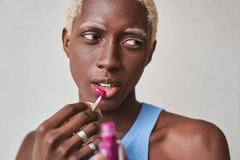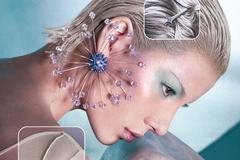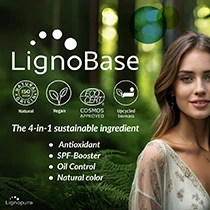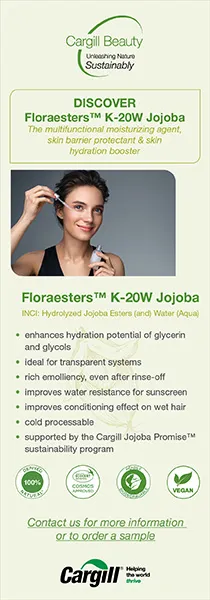Fruits and florals: Green sourcing of raspberry, rambutan, milk thistle and phoenix flower cosmetic bioactives

14 Nov 2023 --- In the ever-evolving landscape of conscious consumerism, cosmetic science for processing natural, bioactive compounds have been advancing. Exploring how formulators’ toolkits are expanding with fruit and floral extracts, Personal Care Insights speaks to BASF on the importance of sustainable sourcing in industry. Additionally, we examine a green extraction method developed through recent research on raspberries.
This year, BASF launched two actives centered around flowers: Kerasylium and Epispot.
“Kerasylium stands as an upcycled biomimetic vegan alternative to keratin, designed to repair damaged hair and shield it from external aggressors. Kerasylium is derived from upcycled milk thistle (Silybum marianum) seed cake, a byproduct of milk thistle oil production,” shares Cécile Kalem, launch manager Europe, BASF Beauty Care Solutions France.
She assures that the flower is cultivated in France for oil production and is part of a traceable and sustainable supply chain.
“Epispot, introduced in September, is a sustainably sourced ingredient that enhances beauty and self-confidence for people with blemish-prone skin. Epispot is obtained through water extraction from the flowering tops of Epilobium angustifolium, also known as fire grass or phoenix flower, thriving after forest fires and logging operations,” says Kalem.
“It is carefully collected by skilled harvesters in France, adhering to strict guidelines and promoting respectful harvesting techniques to ensure sustainable wild plant management. Organic certified harvesting is conducted in six areas to ensure species preservation through thoughtful rotation.”
She adds: “In 2015, BASF initiated responsible sourcing in Vietnam, focusing on an astonishing fruit — rambutan, closely related to the Lychee. The Rambutan program not only brings value to rural Vietnamese communities but also aligns with the expectations of today’s consumers.”
“Three 100% natural and COSMOS-approved actives emerged from this program in 2019: Nephydrat (hydration), Nephoria (retinol-like), and Rambuvital (hair beauty). Each leverages a specific part of the fruit tree to minimize resource wastage.” This year, BASF launched two actives centered around flowers: Kerasylium and Epispot (Image credit: BASF).
This year, BASF launched two actives centered around flowers: Kerasylium and Epispot (Image credit: BASF).
Sourcing challenges and methods
Acknowledging there are certain challenges of formulating with fruit or floral extracts in personal care products, Kalem flags season and weather conditions impacting the availability of the ingredients. “Moreover, cultivating these products sustainably is crucial for environmental preservation, but it can impact ingredient pricing.”
“By innovating with special extraction techniques, unique, high-quality ingredients can be obtained. This not only eases the environmental strain but also meets the growing demand for eco-friendly beauty products. The potential of fruit and flower-based products in the cosmetics industry is vast, driving the search for sustainable and efficient supply chains,” she adds.
Commenting on BASF’s sourcing process, Kalem says it begins with the identification of fruits and flowers with potential for use in cosmetic applications.
“BASF employs various extraction techniques to target specific molecules of interest, ensuring they support the desired efficacy claims. We also meticulously verify the concentration of these active compounds in the extracts we develop,” she says.
“The next vital phase revolves around evaluating the cosmetic efficacy of these extracts. Through a combination of in vitro and in vivo studies, we rigorously assess the performance of these extracts. This evaluation spans from cellular levels to innovative 3D models, and ultimately within cosmetic formulations.”
Once the efficacy of the extracts has been approved, BASF’s procurement teams assess reliable and sustainable raw material suppliers. “We collaborate with these suppliers to establish environmentally and socially responsible supply chains. The goal is to ensure strong traceability and a consistent, high-quality source of raw materials long-term,” notes Kalem.
Research: Extracting functional berry compounds
Looking at an example of green sourcing, a recent study delved into employing ultrasound-assisted extraction (UAE) with deep eutectic solvents (DES) for sustainable extraction. This green and efficient technique ensures the optimal recovery of phenolic compounds and anthocyanins from raspberries.
The red raspberry (Rubus idaeus L.) fruit is brimming with essential vitamins, minerals and phenolic compounds, particularly anthocyanins (blue, red or purple pigments). These compounds are valued for their vibrant colors and health benefits.
Moreover, the compounds found within red raspberry have become sought-after ingredients in the food, cosmetic and pharmaceutical industries, highlight the researchers. The red raspberry fruit is brimming with essential vitamins, minerals and phenolic compounds, particularly anthocyanins.
The red raspberry fruit is brimming with essential vitamins, minerals and phenolic compounds, particularly anthocyanins.
Optimizing the formula
Green carboxylic acid-based deep eutectic solvents, including acetic acid/glucose, formic acid/glucose and lactic acid/maltose, took center stage in the experiment.
The researchers used the response surface methodology based on Box-Behnken Design to optimize the extraction conditions.
The optimum extraction method lasted 60 minutes using a solvent volume of 35 mL and the addition of 30 mL of water to deep eutectic solvent (v/v). The researchers highlight that the meticulous method is critical in extracting optimum levels of phenolic compounds and anthocyanins.
Industry applications
According to the study, the developed model provides a cost-effective method for obtaining natural bioactive compounds and opens ways for application in the food, cosmetic and pharmaceutical industries.
The anthocyanin-rich extracts are promising natural colors with potential health benefits, aligning with the increasing demand for clean label and functional ingredients.
The study’s findings can enable the industry to harness the stability, non-toxicity and potent coloring properties of raspberry-derived anthocyanins. Kalem flags season and weather conditions impacting the availability of the natural ingredients (Image credit: BASF).
Kalem flags season and weather conditions impacting the availability of the natural ingredients (Image credit: BASF).
Anticipating demands and collaborating for sustainability
Furthermore, Kalem of BASF expresses that the versatility of flowers and fruits is boundless.
“Conscious consumerism and ethics in the personal care industry are key drivers. Using cosmetic ingredients derived from fruits and flowers plays a central role in this dynamic. This not only fuels innovation in the beauty industry but also promotes sustainability,” comments Kalem.
“Incorporating byproducts from the nutraceutical or food industry, along with recycling perfume waste to create sustainable ingredients, represents an emerging trend. This approach reduces waste while generating high-value components for beauty products.”
She adds: “One fundamental avenue of collaboration is in the supply chain. BASF works closely with suppliers and growers of fruit and floral extracts, emphasizing the importance of sustainable sourcing practices. The objective is to promote sourcing methods that are not only eco-friendly but also socially responsible.”
Kalem also underscores the importance of collaborating and investing in R&D on sustainable extraction while adhering to industry certifications and partnering with NGOs protecting the ecology.
In recent collaborations, L’Oréal and Cosmo International Fragrances joined forces to develop a green extraction technique that preserves the natural olfactive power of flowers.
By Venya Patel












